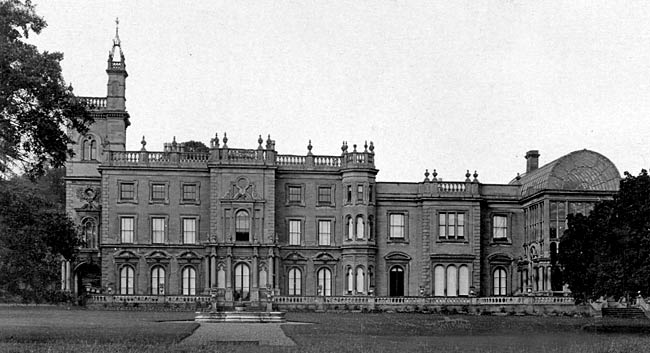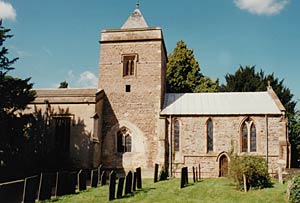< Previous | Contents | Next >
The Battered Knight

Flintham Hall, c.1920.
FLINTHAM. It lies by a fine belt of woodland stretching to the Trent a mile away. From the Fosse Way we have a glimpse of the hall in its splendid background of trees; it was built last century on the site of the old home of the Hose family, who were its lords from the time of Henry the Third to Elizabeth's day. From the road below the village we have a lovely view of the park.

Flintham church in 2000.
The church outside has little claim to beauty. The 13th century tower, with a pyramid roof, stands between the nave and the chancel, telling of the time when the building had the shape of a cross. The transepts were lost and the arches leading to them were blocked when the nave was made new over a century ago, but the two fine tower arches still left frame an effective picture of the chancel, with steps up to the sanctuary, some beautiful old lancets deeply splayed, and the old piscina. The reredos has old carving in the panels, the altar rails may be Elizabethan, a chest and the font cover are Jacobean, and the font itself is 14th century.
On a low tomb lies a battered stone knight in chain mail, his legs crossed. He belonged to the Hose family, and is precious to the village because he may have founded the 13th century church. A tablet tells us of Richard Hacker, who owned land here and was High Sheriff of Notts three years before his nephew led the king to the scaffold.
